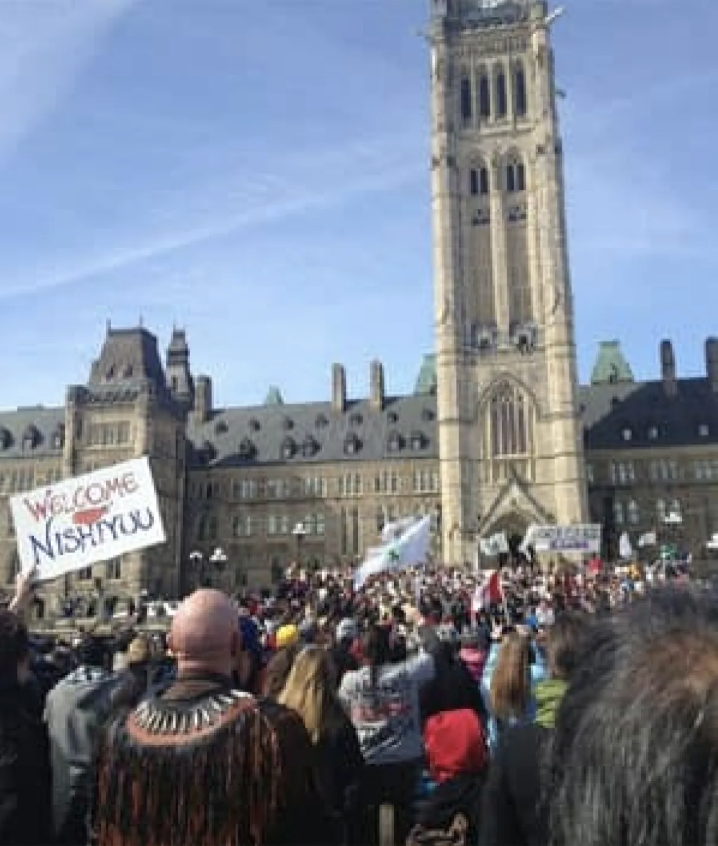
Six youths and a guide left Whapmagoostui in January to snowshoe and walk to Ottawa in support of the Idle No More movement. They called the trek “The Journey of Nishiyuu,” which means “The Journey of the People” in Cree.
The group numbered nearly 400 in the trek’s final hours, according to volunteers and Gatineau police, after other children and youth from Cree and Algonquin communities joined them along the way. Thousands more people joined them on Monday afternoon at Parliament Hill as their journey came to an end.
The group’s wish to meet with the prime minister was not met, as Stephen Harper was in Toronto Monday for a special ceremony to greet two Chinese pandas en route to the Toronto Zoo.
But Aboriginal Affairs Minister Bernard Valcourt did meet with a small group of the original walkers late in the day. No cameras were allowed at the meeting, but the minister was said to have accepted an invitation to visit their First Nation this summer and learn more about their concerns.
7 walkers began journey
David Kawapit, 18, is one of the original seven walkers who set out from Whapmagoostui.
“It feels really good, but at the same time I’m really sad that it’s ending,” he said on Sunday as the group reached Chelsea, Que., about a three-hour walk from Ottawa. “Because a lot of us shared a lot good times here, sad times, but we all stuck together.”
Others on the walk have told Kawapit it’s helping them deal with personal struggles, Kawapit said, including depression and suicidal thoughts. Kawapit struggles with the same.
“It feels really good that a lot of people are paying attention to what’s going on, and that a lot of these guys that are walking with us are helping themselves on this journey.
“But this journey’s really shown me a lot — how much I can help people. And it’s really given me a better understanding of life. I’ve made a lot of friends here, so there’s no way I’m going to leave them.”
“An Indigenous-led Social Movement
Idle No More started in November 2012, among Treaty People in Manitoba, Saskatchewan, and Alberta protesting the Canadian government’s dismantling of environmental protection laws, endangering First Nations who live on the land. Born out of face-to-face organizing and popular education, but fluent in social media and new technologies, Idle No More has connected the most remote reserves to each other, to urbanized Indigenous people, and to the non-Indigenous population.
Led by women, and with a call for refounded nation-to-nation relations based on mutual respect, Idle No More rapidly grew into an inclusive, continent-wide network of urban and rural Indigenous working hand in hand with non-Indigenous allies to build a movement for Indigenous rights and the protection of land, water, and sky.” [credit]